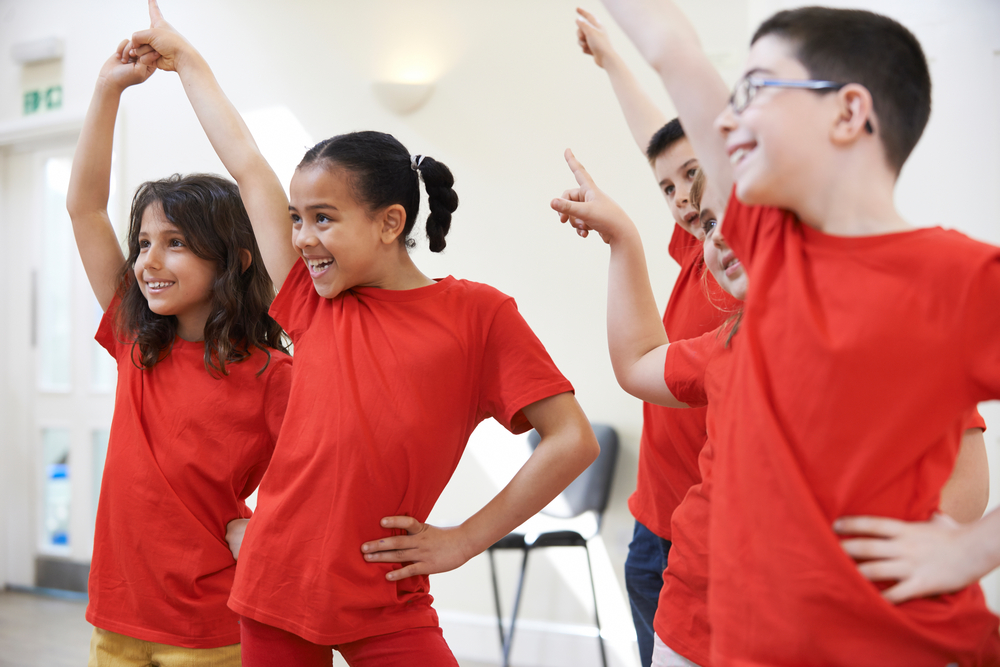Brief bouts of simple synchronised dance-like moves can help groups of children warm to one another, says a new study. Researchers found this was even the case when children’s feelings about the other group were negative beforehand.
Around 100 children who took part in the Oxford University study were divided into groups and performed their moves facing one another, wearing headphones for their rhythmic cues. The researchers discovered that children felt closer to other groups when they moved in the same way to the same beats, but there was no increase in bonding with groups that danced differently at another tempo. The study, published in the journal, Frontiers in Psychology, suggests that even when groups are biased against each other, moving in time with one another can lessen prejudices.
The children who took part in the experiment were aged from 7 to 12 years old. They were randomly selected to make up two groups of three, with a mix of boys and girls in each. First, children in each group wore similar coloured vests and interacted with each other in areas separate from the other group. The two groups were trained out of sight of each other using this training video produced by the researchers.
After they had watched the video, they practised the moves for themselves. They learnt three basic full-body moves, such as stepping to the side or swinging their arms in time to the beats. After the training, the two groups performed their simple dance facing each other for around three minutes.
The children’s responses to a questionnaire reveal how that before dancing, they liked their own group more than the other one. Afterwards, however, children who had danced in a similar way in time with each other said they felt closer and more connected to children in the other group. By contrast, there was no evidence of bonding between groups of children who had performed different moves to different beats.
As well as the questionnaires, the children played the ‘Island Game’– a game developed by the researchers to measure feelings of closeness amongst the groups. In the game, children started from a crouching position and, on the signal "Go!", ran to one of three ‘islands’ (round mats) that they chose privately. They could either select an island nearest their own group, the other group, or in the middle. Researchers found that children who had moved in time with the other group were more likely to choose the island nearest to the other group.
Lead author Bahar Tuncgenc, a DPhil student in Oxford’s Institute of Cognitive and Evolutionary Anthropology, said: 'Throughout our lives, we find that there are groups we identify with and those we feel distinctly cool or even negative towards. These feelings determine our attitudes and strongly influence how we socialise. This study shows how simple dance moves, such as swinging arms or stepping from side to side in time, draw children together emotionally, even if they started out in different groups.
This study shows how simple dance moves, such as swinging arms or stepping from side to side in time, draw children together emotionally.
Bahar Tuncgenc from Oxford's Institute of Cognitive and Evolutionary Anthropology
She added: 'This might provide clues to how we can develop approaches to break down barriers between groups and help them to socialise better. Here, we split children into groups arbitrarily, but future studies could look at whether similar activities forge bonds in cases where there is a history of ill feeling. These findings may help those developing social and educational interventions for increasing cohesion and cooperation among groups where there are economic, ethnic or religious divides.'
Co-author Emma Cohen, Associate Professor at the Institute of Cognitive and Evolutionary Anthropology at the University of Oxford, commented: 'Decades of research in social psychology has established how easily we form "groupish" attitudes as adults and even very young children. There is also growing evidence to support the common wisdom that when individuals come together and move together, whether in dance, sport, ceremonial rituals, or playground games, they feel closer together. The results of this new study suggest that this sort of group activity where they coordinate moves in time with one another can overcome feelings of "them and us".'
The paper, 'Movement synchrony forges social bonds across group divides', is published in the journal, Frontiers in Psychology
